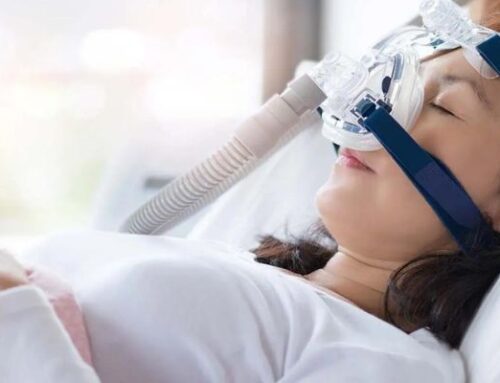Sleep apnea is a common sleep disorder that affects many people globally. It is characterized by breathing challenges experienced during sleep. The symptoms are usually gasping for breath, choking, and loud snoring. Also, you might have sleep apnea if you feel tired after getting enough rest. In this article, we explore the role of chiropractic care for sleep apnea relief.
Symptoms Of Sleep Apnea
It can be challenging to differentiate between obstructive and central sleep apneas because their symptoms are often related. Obstructive and central sleep apnea symptoms most frequently noticed include:
- Irritability
- Hypersomnia
- Insomnia
- Morning headache
- Awakening with a dry mouth
- Gasping for air during sleep
- Loud snoring
The Role of Chiropractic Care in Sleep Apnea Relief
Without treatment, sleep apnea can lead to serious health issues like strokes, heart issues, and high blood pressure. According to research, chiropractic care may be able to reduce some sleep apnea symptoms.
Chiropractic interventions can lessen nerve obstructions and improve respiratory system performance by realigning the spine and making adjustments to various body parts. Chiropractic care can also help with the concurrent management of conditions like chronic pain and stress that cause sleep apnea.
Below are the roles chiropractic care plays in sleep apnea relief.
1. Improves breathing
By addressing structural issues related to sleep apnea, chiropractic care may provide a way to improve respiratory function. Breathing during sleep can become challenging due to tension in the soft tissues and muscles surrounding the airways caused by variations in spinal or neck alignment.
To correct these misalignments, improve airflow, and release tension, chiropractors use a variety of techniques like soft tissue mobilization and spinal adjustments. Chiropractic care may improve respiratory patterns and reduce symptoms of sleep apnea, ultimately improving the quality of your sleep.
With a focus on the musculoskeletal system’s underlying causes, this holistic method of treating sleep apnea offers a non-invasive option. It remains a potentially effective alternative for those who are looking for relief through improved breathing.
2. Strengthens the respiratory muscles

Chiropractic care may strengthen the respiratory muscles. The result is better breathing and a lessening of the severity of sleep apnea episodes. The intercostal muscle and diaphragm, which are important for supporting the respiratory system, may be strengthened through specific exercises and stretching routines used by chiropractors.
This strategy aims to strengthen these vital parts, which will improve the effectiveness of breathing and lower the risk of developing sleep apnea episodes.
People with sleep apnea can expect a more refined respiratory system through the targeted methods and muscle-strengthening techniques of chiropractic care. The result is a decrease in sleep apnea episodes and an overall improvement in the quality of their sleep.
3. Reduces stress
Chiropractic interventions, which reduce stress and promote relaxation, can help in treating sleep apnea. This is because they frequently result from the pervasive influence of stress. To relieve tension and improve blood circulation, chiropractors use a variety of therapeutic techniques, such as massage therapy and spinal adjustments.
These methods work together to promote relaxation and lower stress levels. Chiropractic care helps improve sleep quality and reduce the frequency and severity of sleep apnea episodes by reducing the stress that is placed on the body.
Therefore, this strategy helps people in developing better sleep habits and reduces the disruptive effects of sleep apnea. Thereby, vitality and general well-being are enhanced.
4. Improves posture
Since poor posture restricts airway passages and makes breathing difficult, it may contribute to sleep apnea. By addressing muscle imbalances and correcting spinal misalignments that may cause poor posture, chiropractic care offers a potential solution to this problem.
This postural improvement, made possible by chiropractic care, can lessen the stress on the airways and improve breathing efficiency. Furthermore, improved posture can lessen discomfort and pain that may be affecting your sleep. The symptoms of sleep apnea will become better this way.
In addition to addressing the underlying causes of sleep apnea, this holistic approach also promotes general well-being. If you are looking for relief from this condition, chiropractic care becomes a valuable option for you as it will make your posture better.
5. Promotes nervous system functions
Chiropractic care can also improve the nervous system’s efficiency. This way, it could result in significant improvements in sleep quality and a decrease in the severity of sleep apnea episodes. Instability in the nervous system’s operation can contribute to sleep apnea because it controls many essential bodily processes, including respiration.
To correct spinal misalignments, chiropractors use a variety of techniques, such as spinal adjustments and mobilization. As a result of this adjustment, the likelihood of developing sleep apnea episodes is decreased while nervous system performance is improved.
Therefore, chiropractic care offers a comprehensive strategy for addressing the complex factors that affect sleep quality and the severity of sleep apnea. It provides a promising alternative for those looking for efficient and non-invasive treatment means of improving their nervous system functions.
6. Addresses other health issues

Chiropractic treatment has many benefits such as that it can be used to treat several health issues that contribute to sleep apnea. Some of the factors that increase the likelihood of sleep apnea include conditions like chronic pain, hypertension, and obesity.
Chiropractic professionals are skilled at working with patients to address these fundamental health challenges by using a holistic strategy that includes chiropractic treatments, lifestyle modifications, and physical activity routines.
Chiropractic care works to improve these underlying health problems through this approach, which lessens how severe sleep apnea is. Eventually, by addressing other health-related issues, this thorough approach helps in treating sleep apnea as well as promotes an improvement in general health and well-being.
Conclusion
Chiropractic care can be used to treat sleep apnea through improvement in respiration, stress reduction, and the promotion of relaxation. Nevertheless, chiropractic care must complement other treatment methods. Also, individuals with sleep apnea must seek guidance from their healthcare provider before going for any new therapies.












